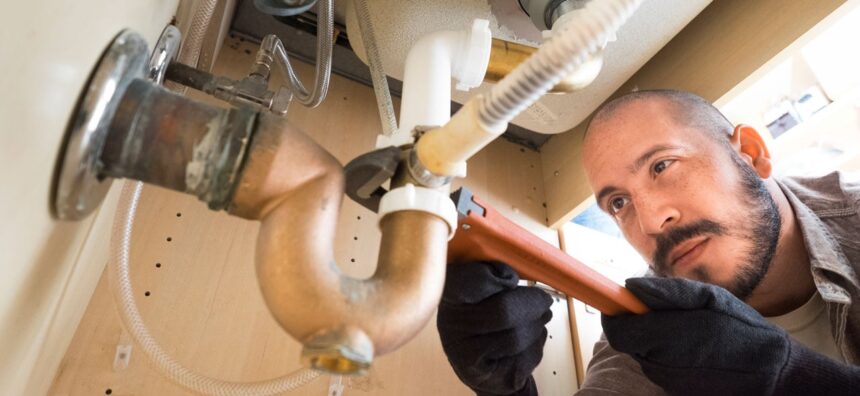Both plumbers and steamfitters are professionals who install, repair, and maintain systems in buildings. While both professionals deal with pipes and associated fixtures, their specific roles are different. Plumbers work in residential and commercial settings, while steamfitters are likely to work in industrial centers. Here are the main differences between steamfitters and plumbers:
Primary Focus
Although both steamfitters and plumbers serve in the building maintenance and construction industry, they have different roles. Water systems are the main area of specialization for most plumbers. Plumbers diagnose, repair, maintain, and install fixtures and appliances that distribute and supply water in a building. If a plumber specializes in residential buildings, they have expertise in handling showers, faucets, and home appliances.
Plumbers can also install, repair, and clean the drainage system in a home. In commercial settings, plumbers maintain and install complex pipe networks that can handle huge amounts of water. Plumbers handle large boilers, water heaters, and fire suppression systems. In contrast, steamfitters focus on systems that store or transport high-pressure liquids and gases. Such systems are often present in huge commercial buildings and industrial plants.
Skills and Training
Plumbers have skills and training that help them understand drainage and water systems. An experienced plumber knows how to read blueprints, lay pipes, and install specific fixtures such as water heaters. Once a plumber finishes their training, they can understand and interpret plumbing codes and regulations. The training of steamfitters imparts skills such as pipe fitting and welding. A trained steamfitter has the skills to maintain and install pipe systems that handle hydraulic fluids and steam. An experienced steamfitter also knows how boilers, heat exchanges, and pneumatic controls work.
Materials Used
Plumbers often deal with copper, as most water supply lines use this material. They also deal with cross-linked polyethylene, which is easy to install and lasts for long periods of time. For residential waste lines, the plumber has to know how to install and repair pipes made of polyvinyl chloride (PVC). Other materials that plumbers deal with include cast iron, polyethylene, and rubber. Steamfitters typically work with carbon steel because the material can handle high pressure. If a steamfitter expert works with corrosive gas or steam, they likely interact with stainless steel and alloy steel. Other materials that steamfitters typically deal with include bronze, fiberglass, reinforced plastic, titanium, and ductile iron.
Codes and Regulations
Plumbing work adheres to specific codes, such as the International Plumbing Code (IPC). This code specifies the process of designing and installing plumbing fixtures. Plumbers also have to be familiar with the National Standard Plumbing Code which is used throughout the United States. The National Sanitation Foundation also has regulations about water treatment that plumbers need to follow.
Steamfitters use the ASME Boiler and Pressure Vessel Code in their work. This code details aspects related to pressure pipes and boilers. Other codes that steamfitters follow include the Power Piping Code, Process Piping Code, and the American Welding Society Standards. Both plumbers and steamfitters have to follow regulations set by the Environmental Protection Agency (EPA) as well as the Occupational Safety and Health Administration.
Typical Tasks
Plumbers repair leaks, install water supply systems, and unclog drains. If your sewer lines are clogged, plumbers clean and repair them. A plumber can also install typical plumbing fixtures such as showers and toilets, and they can install home appliances such as water heaters. Whenever your pipes burst or crack, a plumber repairs them. It’s also a plumber who inspects your plumbing systems, installs gas lines, and conducts emergency repairs.
Steamfitters maintain boilers and inspect high-pressure systems. These professionals can install steam systems, and they also join pipes with the help of brazing and welding. They install cooling systems, carry out pressure tests, and set up process piping. If pipes carrying high-pressure fluids misalign, plumbers align them. An experienced steamfitter has the skills to read piping blueprints and create a network of pipes. Steamfitters also install heat exchangers and fire suppression systems.
Find Professional Plumbers for Plumbing Problems
As a home or business owner, you are more likely to work with plumbers rather than steamfitters. Plumbers inspect your drains, repair broken pipes, and check your appliances. Find a professional plumber to help you with your home’s plumbing needs today.






